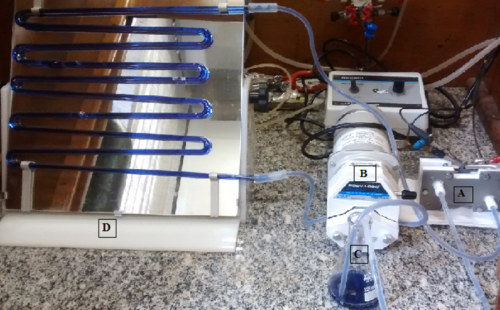
Electrochemical system. (A) filter cell press, (B) peristaltic pump, (C) solution to be treated and (D) reservoir composed by quartz tubes.
Nowadays, the need to adapt Brazil to national and international environmental legislation, for the export of its products, involves a complete control of the production line, including the treatment of waste generated in each process, requiring the proper monitoring of these compounds as for toxicity, mutagenicity, bioavailability and durability on nature. Therefore, understanding this problematic, the LEEA is part of a network of laboratories that are linked to INCT-DATREM, whose objective is to detect and studies of emerging pollutants that has aroused the concern of the entire scientific community.
Thus, within the scope of Environmental Electrochemistry, LEEA investigates the degradation of pollutants present in industrial wastewater, such as dyes, pesticides and other organic compounds, through the use of advanced oxidative processes associated or not with other degradation methods, such as photochemical, microbiological and enzymatic.





